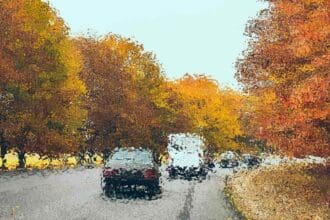If you are planning a trip to Delhi, Lotus Temple is definitely a must-visit destination. It is not just another tourist attraction but an architectural masterpiece that reflects the beauty and serenity of the Bahá’í faith. In this article, we will delve into the history, design, and significance of Lotus Temple and explore everything you need to know before visiting this iconic landmark.
Table of Contents
- Introduction
- The History of Lotus Temple
- The Design of Lotus Temple
- The Lotus Flower and Its Significance
- The Architecture of Lotus Temple
- The Significance of Lotus Temple in Bahá’í Faith
- The Experience of Visiting Lotus Temple
- The Gardens of Lotus Temple
- The Interior of Lotus Temple
- Practical Information for Visiting Lotus Temple
- Opening Hours and Entrance Fees
- Dress Code and Photography
- How to Reach Lotus Temple
- Top Tips for Visiting Lotus Temple
- Conclusion
- FAQs
1. Introduction
Lotus Temple, also known as the Bahá’í House of Worship, is a prominent tourist attraction in Delhi. It is a temple that welcomes people of all religions and backgrounds to experience the beauty and serenity of the Bahá’í faith. The temple is shaped like a lotus flower and is surrounded by lush green gardens, making it a peaceful oasis in the bustling city of Delhi.
2. The History of Lotus Temple
Lotus Temple was completed in 1986 and was designed by Iranian-Canadian architect Fariborz Sahba. The construction of the temple took 10 years and was funded entirely by donations from the Bahá’í community. The temple was opened to the public in December 1986 and has since become one of the most visited tourist attractions in Delhi.
3. The Design of Lotus Temple
The Lotus Flower and Its Significance
The design of Lotus Temple is inspired by the lotus flower, which is a symbol of purity, enlightenment, and rebirth in many religions and cultures. The lotus flower is also significant in the Bahá’í faith as it represents the Manifestation of God.
The Architecture of Lotus Temple
Lotus Temple is made up of 27 free-standing marble-clad “petals” arranged in three rows, forming nine sides. The petals are made of white marble from Greece and are arranged in such a way that they form a lotus flower. The temple has a capacity of 2,500 people and is surrounded by nine ponds, which add to its tranquil ambiance.
4. The Significance of Lotus Temple in Bahá’í Faith
Lotus Temple is not just a tourist attraction but a place of worship for the Bahá’í community. The Bahá’í faith believes in the unity of all religions and the oneness of humanity. Lotus Temple, with its welcoming and inclusive atmosphere, embodies these principles and serves as a symbol of unity and peace.
5. The Experience of Visiting Lotus Temple
The Gardens of Lotus Temple
The gardens surrounding Lotus Temple are a sight to behold. They are beautifully landscaped with a variety of flowers and trees, providing a peaceful atmosphere. Visitors can take a stroll through the gardens, enjoy a picnic or simply sit and soak in the tranquility.
The Interior of Lotus Temple
The interior of Lotus Temple is equally stunning. As visitors enter the temple, they are greeted with a spacious and airy central hall that is devoid of any religious symbols. The hall has a seating capacity of 2,500 people and has nine doors, which symbolize the nine main religions of the world. The walls of the hall are made of white marble and are inscribed with quotations from various religious scriptures, including the Bhagavad Gita, the Bible, and the Quran.
Visitors are required to maintain silence inside the temple, which adds to the overall peaceful atmosphere. The temple is also designed in such a way that it is naturally ventilated, reducing the need for air conditioning.
6. Practical Information for Visiting Lotus Temple
Opening Hours and Entrance Fees
Lotus Temple is open to visitors from Tuesday to Sunday between 9:00 am to 7:00 pm. The temple is closed on Mondays. Entry to the temple is free of charge.
Dress Code and Photography
Visitors are required to dress modestly when visiting Lotus Temple. Shorts, skirts, and sleeveless tops are not allowed inside the temple. Visitors are also not allowed to take any photography or videos inside the temple.
How to Reach Lotus Temple
Lotus Temple is located in the Kalkaji area of South Delhi and is easily accessible by public transport. The nearest metro station is Kalkaji Mandir Metro Station, which is on the violet line of the Delhi Metro.
7. Top Tips for Visiting Lotus Temple
- Plan your visit during the early morning or late afternoon to avoid the crowds and enjoy the serene atmosphere.
- Dress modestly and wear comfortable shoes, as you will be required to remove your shoes before entering the temple.
- Maintain silence inside the temple to respect the peaceful atmosphere.
- Take some time to explore the beautiful gardens surrounding the temple.
- Respect the rules and regulations of the temple and the Bahá’í faith.
Travel Tips and Tourist Attractions Near Lotus Temple
Travel Tips
- Plan your visit to Lotus Temple in the morning or evening to avoid the heat and crowds.
- Wear comfortable shoes as you will be required to remove them before entering the temple.
- Respect the silence and peaceful atmosphere inside the temple.
- Photography is not allowed inside the temple, so leave your camera behind.
- Dress modestly and avoid wearing shorts, skirts, and sleeveless tops.
- Visit the gift shop inside the temple to buy souvenirs and mementos.
Tourist Attractions Near Lotus Temple
There are several tourist attractions near Lotus Temple that you can explore after your visit:
- Humayun’s Tomb: This UNESCO World Heritage Site is a stunning example of Mughal architecture and is located just 5 km away from Lotus Temple.
- Qutub Minar: This towering minaret is another UNESCO World Heritage Site and is located about 13 km away from Lotus Temple.
- India Gate: This iconic war memorial is located about 8 km away from Lotus Temple and is a must-visit attraction in Delhi.
- Akshardham Temple: This magnificent Hindu temple is located about 14 km away from Lotus Temple and is known for its stunning architecture and intricate carvings.
- Hauz Khas Village: This trendy neighborhood is located about 10 km away from Lotus Temple and is known for its vibrant nightlife, trendy cafes, and art galleries.
Conclusion
Lotus Temple is a unique and beautiful destination that offers visitors an opportunity to experience the beauty and serenity of the Bahá’í faith. Its stunning architecture, tranquil atmosphere, and welcoming spirit make it a must-visit destination in Delhi. Whether you are a spiritual seeker or a traveler looking to explore the city’s cultural heritage, Lotus Temple is sure to leave a lasting impression on you.
FAQs
- What is the best time to visit Lotus Temple?
- It is best to visit Lotus Temple during the early morning or late afternoon to avoid the crowds and enjoy the peaceful atmosphere.
- What is the dress code for visiting Lotus Temple?
- Visitors are required to dress modestly and avoid wearing shorts, skirts, and sleeveless tops.
- Is photography allowed inside Lotus Temple?
- No, photography is not allowed inside Lotus Temple.
- How do I reach Lotus Temple?
- The nearest metro station to Lotus Temple is Kalkaji Mandir Metro Station, which is on the violet line of the Delhi Metro.
- Is there an entrance fee for visiting Lotus Temple?
- No, entry to Lotus Temple is free of charge.















I have been exploring for a little bit for any high quality articles or blog posts on this kind of space . Exploring in Yahoo I finally stumbled upon this site. Studying this info So i’m satisfied to convey that I’ve a very just right uncanny feeling I discovered exactly what I needed. I most surely will make certain to don’t disregard this site and provides it a look on a relentless basis.
I like this site very much so much wonderful info .